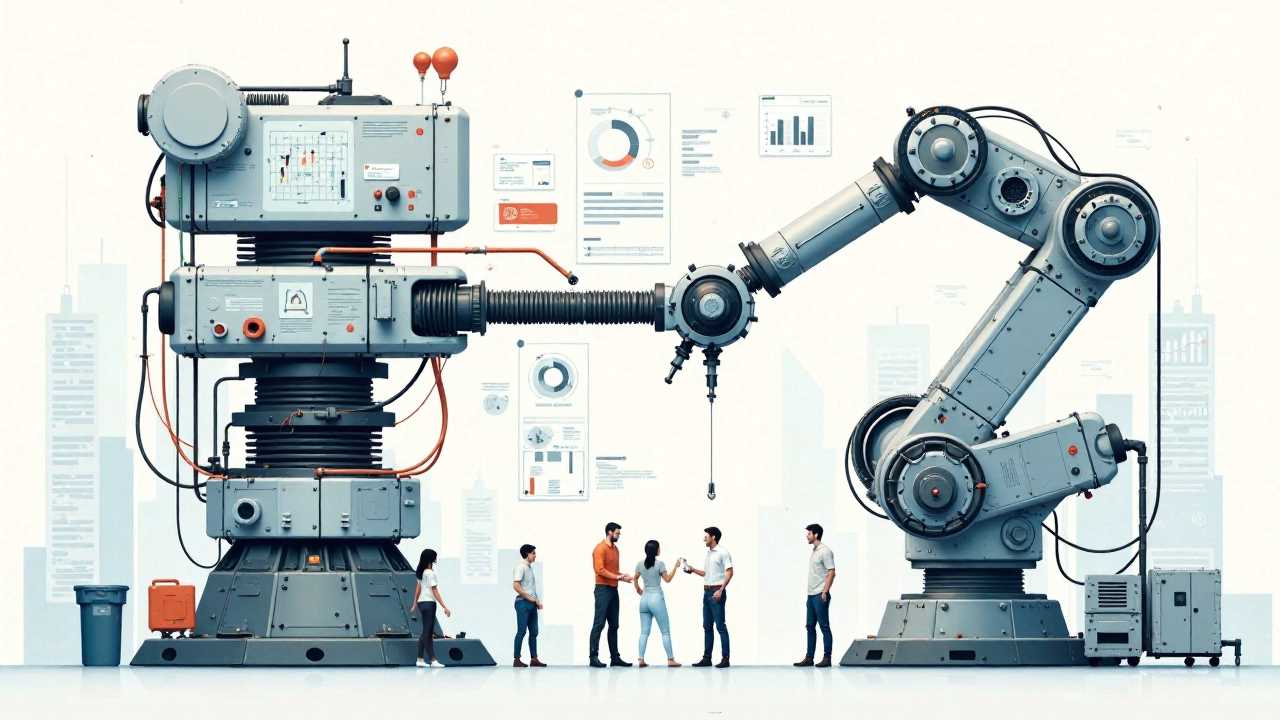
Understanding Robotic Process Automation
Robotic Process Automation (RPA) is a game-changing technology that enables organizations to automate routine and repetitive tasks. By utilizing software robots or "bots," businesses can streamline their operations, reduce human error, and significantly enhance productivity. RPA is not just about replacing human labor; it is about empowering employees to focus on more strategic tasks that require critical thinking and creativity.
The integration of RPA into business processes allows for seamless interaction between various applications, effectively mimicking human actions. This capability is essential for organizations looking to optimize their workflows and achieve a higher level of operational efficiency.
The Role of Automation in Business Transformation
Automation is at the heart of digital transformation. It involves the use of technology to perform tasks that would typically require human intervention. By implementing automation, businesses can achieve faster turnaround times, improved accuracy, and reduced operational costs.
In the context of RPA, automation can be applied across various departments, including finance, human resources, and customer service. For instance, in finance, RPA can automate invoice processing, reconciliation, and reporting. In human resources, it can streamline onboarding processes and employee data management. The result is a more agile organization that can respond quickly to market changes and customer demands.
Integrating AI and Machine Learning with RPA
The integration of Artificial Intelligence (AI) and Machine Learning (ML) with RPA takes automation to the next level. While RPA handles rule-based tasks, AI and ML introduce cognitive capabilities that allow systems to learn from data and make decisions. This combination enables organizations to automate more complex processes that require judgment and analysis.
For example, AI can analyze customer interactions and predict future behavior, allowing businesses to tailor their services accordingly. Machine Learning algorithms can continuously improve the performance of RPA by learning from past actions and outcomes, leading to more efficient workflows. The synergy between RPA, AI, and ML creates a powerful ecosystem that drives innovation and enhances business agility.
Streamlining Workflows Through RPA
Effective workflow management is crucial for any organization aiming to improve efficiency. RPA facilitates the automation of workflows by integrating various systems and applications, allowing for the smooth transfer of data and tasks. This integration eliminates silos within organizations, ensuring that information flows seamlessly across departments.
For instance, an automated workflow can trigger a series of actions based on specific events, such as a customer placing an order. The RPA system can automatically update inventory levels, generate invoices, and notify the shipping department, all without human intervention. This level of automation not only speeds up processes but also reduces the likelihood of errors, leading to a more reliable service.
The Impact of Digital Transformation on Business Efficiency
Digital transformation is not merely about adopting new technologies; it is about rethinking how organizations operate and deliver value to customers. RPA plays a pivotal role in this transformation by enabling businesses to become more efficient and responsive.
As organizations embrace digital transformation, they can leverage RPA to improve customer experiences, enhance operational efficiency, and drive innovation. By automating mundane tasks, employees can focus on higher-value activities that contribute to business growth. This shift not only boosts employee morale but also enhances customer satisfaction, as services become faster and more reliable.
Challenges and Considerations in Implementing RPA
While the benefits of RPA are substantial, organizations must also consider the challenges associated with its implementation. One significant challenge is the need for change management. Employees may be resistant to adopting new technologies, fearing job displacement or increased complexity in their roles.
To address these concerns, organizations should invest in training and development programs that equip employees with the skills needed to work alongside RPA technologies. Additionally, it is essential to communicate the benefits of RPA clearly, emphasizing how it can enhance their roles rather than replace them.
Another consideration is the need for robust governance and compliance measures. As RPA systems handle sensitive data, organizations must ensure that they adhere to regulatory requirements and maintain data security. Implementing proper oversight mechanisms will help mitigate risks and ensure that RPA initiatives align with organizational goals.
Future Trends in RPA and Automation
The future of Robotic Process Automation is promising, with several trends shaping its evolution. One notable trend is the increasing adoption of intelligent automation, which combines RPA with AI and ML to create more sophisticated automation solutions. This trend will enable organizations to automate even more complex processes, driving further efficiencies.
Another trend is the rise of cloud-based RPA solutions. As businesses continue to migrate to the cloud, RPA tools that operate in cloud environments will become more prevalent. This shift allows for greater scalability, flexibility, and accessibility, enabling organizations to deploy RPA solutions quickly and efficiently.
Moreover, the integration of RPA with emerging technologies such as the Internet of Things (IoT) and blockchain will open new avenues for automation. These technologies will enhance data collection and analysis, allowing organizations to make more informed decisions and optimize their operations further.
Embracing the Future of Automation
In summary, Robotic Process Automation, coupled with AI and Machine Learning, is transforming the way businesses operate. By streamlining workflows, enhancing efficiency, and driving digital transformation, RPA is paving the way for a more agile and innovative future. Organizations that embrace these technologies will not only improve their operational efficiency but also position themselves for success in an increasingly competitive landscape. As we move forward, the integration of RPA with other advanced technologies will continue to redefine business processes, making automation an indispensable tool for growth and sustainability.
 Business & FinanceHealth & MedicineTechnologyLifestyle & CultureScience & EnvironmentWorld NewsPrivacy PolicyTerms And Conditions
Business & FinanceHealth & MedicineTechnologyLifestyle & CultureScience & EnvironmentWorld NewsPrivacy PolicyTerms And Conditions
